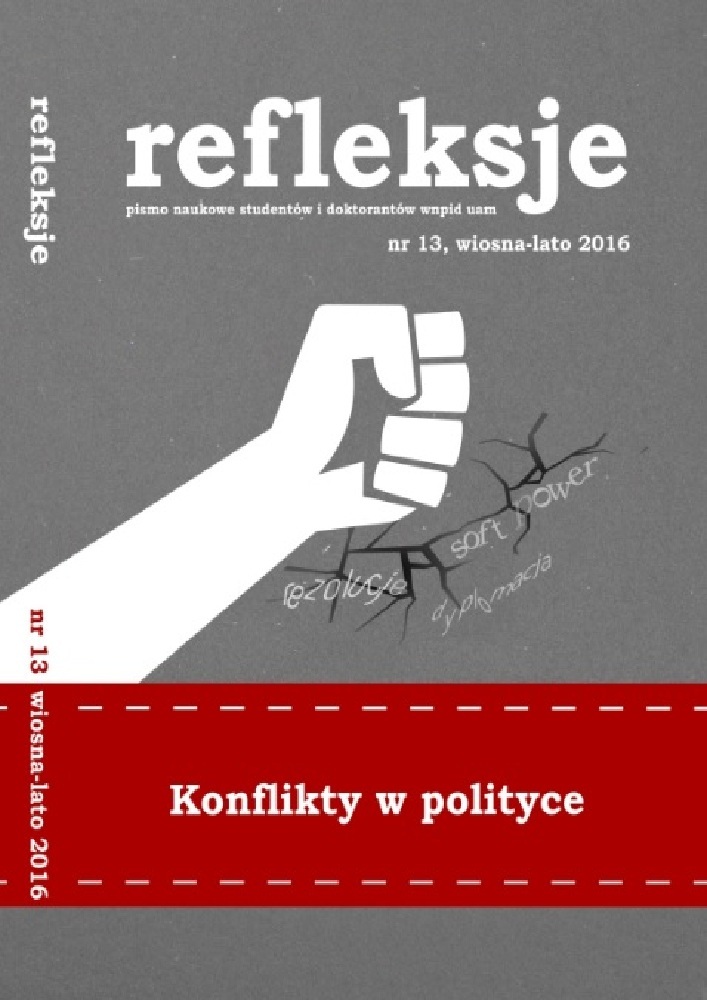Abstrakt
In 1956, the Games of the XVI Olympiad in Melbourne coincided with the Hungarian Revolution, an attempt of the Hungarians to free themselves from the Soviet domination, eventually suppressed by an armed intervention of the Soviet Army. During the semi-final water polo match between USSR and Hungary the players came to blows. The Hungarian Ervin Zádor was punched by a Soviet team player and his blood coloured the water in the pool red. The match ultimately ended in a victory for Hungary. The main goal of the article is to describe the conflict between Hungary and the USSR which had its tragic final in a sport match at the Melbourne Olympic Games. The 1956 Olympic Games showed to what extent political conflicts are mirrored in sport. Hungarians wanted to show they were a free nation and that they would never accept the political sway of Moscow over their country.
Bibliografia
Before the Olympics: A Review of Sports in the Satellites (1956), „News From Behind the Iron Curtain”, Nowy Jork, t. 5.
Czarkowska E. (2007), Interwencja Związku Radzieckiego na Węgrzech w 1956 roku, Toruń.
Felczak W. (1983), Historia Węgier, Warszawa.
Gati C. (2006), Stracone Złudzenia. Moskwa, Waszyngton i Budapeszt wobec powstania węgierskiego 1956 roku, Warszawa.
Gojawiczyńska B. (1986), Kwestia węgierska na arenie międzynarodowej w latach 1944- 1947: od rozejmu do traktatu pokojowego, Łódź.
Gordon H. (2007), That Closing Ceremony in Melbourne, the Chinese Boy, the Chief Organiser and Avery Brundage, „Journal of Olympic History”, vol. 15, nr 1.
Handler A. (1985), From the Ghetto to the Games: Jewish Athletes in Hungary, Nowy Jork.
Horváth M. (2006), 1956 - rozstrzelana rewolucja: walka zbrojna Węgrów z interwencją sowiecką, Kraków.
Hungarians Beat Russian Team, 4-0 (1956), „New York Times”, 6.12.1956.
Hurley A. (2015), Hoop High. A history of Australian Olympic basketball 1956-2000, Sydney, vol. 1.
Karczewski M. (2012), Sport w stosunkach międzynarodowych. Wstęp do teorii, „Refleksje”, wiosna, wydanie specjalne.
Kis J. (1989), Węgry 1956-57: czas odbudowy systemu, Warszawa.
Kopacsi S. (1980), Węgry 1956: trzynaście dni nadziei, Warszawa.
Lipoński W. (2012), Historia sportu, Warszawa.
Lomax B. (1986), Węgry 1956, Warszawa.
Młodzikowski G. (1984), Olimpiady ery nowożytnej, Warszawa.
Młodzikowski G. (1979), Polityka i sport, Warszawa.
National that withdrew urged to return to Olympic Games (1956), „New York Times”, 10.11.1956.
Nawrocki A. (1990), Jak zamordowano Imre Nagya?, Warszawa.
Pax Olympica: (my term) efforts of the I.O.C. (1956), „New York Times”, 8.12.1956.
Porada Z. (1980), Starożytne i nowożytne igrzyska olimpijskie, Kraków.
Rinehart R. (1996), First flew and blood flowed: Symbolic Resistance and International Response in Hungarian Water Polo the Melbourne Olympics, 1956, „Journal of Sport History”, vol. 23, nr 2.
Stawiński J. (1996), Rewolucja węgierska 1956 roku: reformy, bunt i represje 1953-1963, Warszawa.
The Official Report of the Organizing Committee for the Games of the XVI Olympiad Melbourne 1956 (1958), Melbourne.
Torres C. (2007), Stymied Expectations. Buenos Aires’ Persistent Efforts to Host Olympic Games, „Olympika”, vol. XVI.
Zdebska H. (2008), Istota i wartości zespołowych gier sportowych, Kraków.
Żylcow A. (1980), Ku olimpijskim szczytom, Warszawa.
